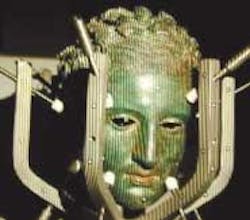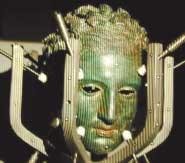Ancient statue gets modern treatment
In 1999, an ancient bronze sculpture was found lying 40 m beneath the surface of the Adriatic Sea near the Croatian island of Losinj. The statue, of a male athlete named Apoxyomenos, depicts the man scraping oil and dust from his body after a competition. It is thought to be either a masterpiece of the famous Greek sculptor Lysippos, dating to the fourth century B.C., or a Roman copy. The statue is being restored and its origin is being determined.
Scientists from Topomatika (Zagreb, Croatia) have completely mapped the statue in three dimensions (3-D) with a digitizing system made by Gesellschaft für Optische Messtechnik (GOM; Braunschweig, Germany), which contains frame grabbers manufactured by Coreco Imaging (St. Laurent, Quebec, Canada). The system projects a white-light fringe pattern onto the surface to be mapped; two cameras capture stereo information, allowing 3-D information to be extracted. The frame grabber triggers image acquisition, highlights regions of interest in the image, and compensates for uneven lighting.
A high-resolution version of the 3-D mapping system was chosen for the work, with the cameras providing 1.3 megapixels of information. The shutter times are adjustable and are driven from the frame grabber. The body and head of the statue were mapped separately. Both body and head were fixed in specially built clamps to prevent fringe motion (fringe pattern and reference markers are visible in this image of the head). The statue was digitized in sections, with a typical measurement area of 350 × 280 mm and a measurement time of approximately 10 s per section. Each section was then referenced to a global framework based on reference markers placed on the statue's surface. In all, 144 scans were done on the body and 57 on the head, at a typical resolution of 13 points/mm2.
The data will not only help researchers document the restoration process, but will also allow copies of the statue and precise holders for transportation to be fabricated. The restorers have yet to determine whether the statue is a Greek original or a Roman copy.

